Judi Lynn
Judi Lynn's JournalBrazil miner sees Indigenous land as ripe for exploration if protections expire
by Sydney Bauer on 30 August 2022
A Brazilian company stands poised to start mining inside an Indigenous territory in the Amazon as soon as October, highlighting the precarious nature of the protections afforded to Indigenous lands under the current administration.
Oxycer Mining has filed five applications with the national mining regulator to prospect for gold in the Piripkura Indigenous Territory in Mato Grosso state, according to data from the Instituto Socioambiental (ISA), a nonprofit that advocates for the rights of Indigenous and traditional peoples.
The territory has not yet been demarcated, or officially recognized by presidential decree, and is currently only protected under a legal mechanism known as a “use restriction ordinance.” These ordinances, which protect against activities such as illegal logging and mining, are temporary in nature and must be periodically renewed. The ordinance for the Piripkura territory is due to expire on Oct. 4, according to the ISA, and Oxycer’s mining applications suggest there’s a possibility it won’t be renewed. The Federal Public Ministry is seeking renewal of the ordinance, but the last two ordinances were only renewed for six-month periods, according to the ISA.
The 243,000-hectare (600,500-acre) Piripkura Indigenous Territory is home to one of the world’s most vulnerable uncontacted Indigenous peoples. There are only three known surviving Piripkura individuals: uncle and nephew Pakyî and Tamandua live in voluntary isolation in the Piripkura territory, while Rita, Pakyî’s sister and the only one of the trio with extended contact with the outside world, lives in the Karipuna Indigenous Territory in neighboring Rondônia state. The Piripkura suffered from at least two massacres since their first contact with outsiders in the 1980s and now faces the risk of extinction again.

Tamandua and Pakyî, two of the last remaining Piripkura, appear in the 2017 documentary “Piripkura”, by directors Bruno Jorge, Mariana Oliva and Renata Terra. Their land is the target of a new mining operation from the Brazilian company Oxycer if Brazil’s Congress does not renew an ordinance that protects their territory. Image from the documentary film “Piripkura”.
More:
https://news.mongabay.com/2022/08/brazil-miner-sees-indigenous-land-as-ripe-for-exploration-if-protections-expire/
New York Times disparages Aristide, Haiti's champion of the poor
August 28, 2022
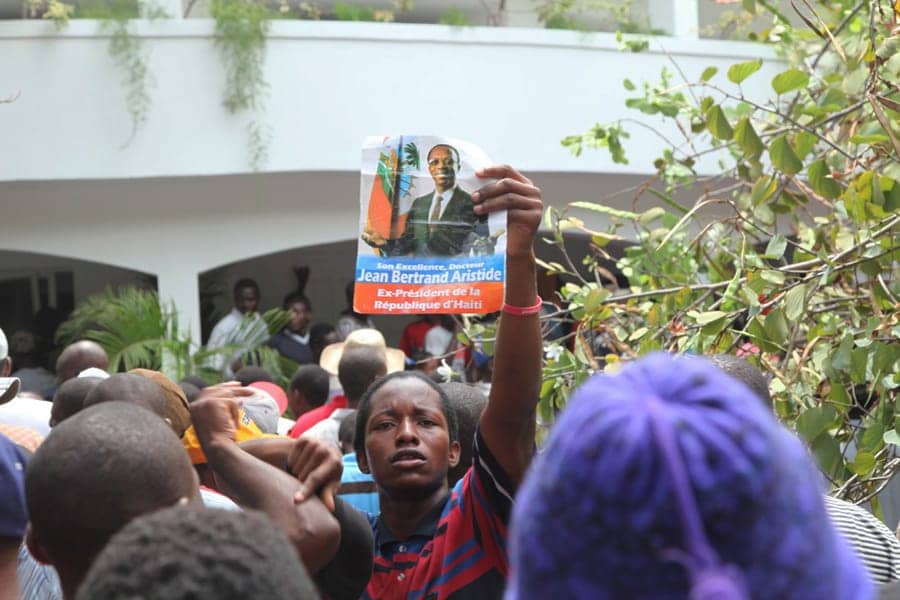
On March 18, 2011, the day former President Aristide returned to Haiti from exile, tens of thousands followed him from the airport to welcome him home. A boy held high a time-worn Aristide poster. – Photo: Paul Burke
by Haiti Action Committee
Recently the New York Times published an article about the increasing power of Haitian gangs. The article was correct in describing how the gangs operate and how they are financed by business and political elites, but it falls into the Times’ historical pattern of disparaging Aristide and the accomplishments of the Lavalas administrations. Haiti Action Committee member Charlie Hinton sent the Times a 173-word condensed version of the letter below, but they haven’t published it, so we want to share the letter in an expanded form:
To the Editor: I’m writing to clarify two misrepresentations about Haiti’s former President Jean-Bertrand Aristide in your article on the advance of Haitian gangs. The gangs plaguing Haiti today started to form after the 1986 overthrow of Baby Doc Duvalier, during the five-year period of military dictatorships before Aristide’s presidency began.
Known in Haitian Kreyol as zenglendos, they included members of Duvalier’s tonton macoutes death squad and the Haitian military. They carried out robberies and home invasions and assassinated democracy activists. Residents formed neighborhood watch groups for protection and self defense. These were not “gangs,” as the Times article maintains.
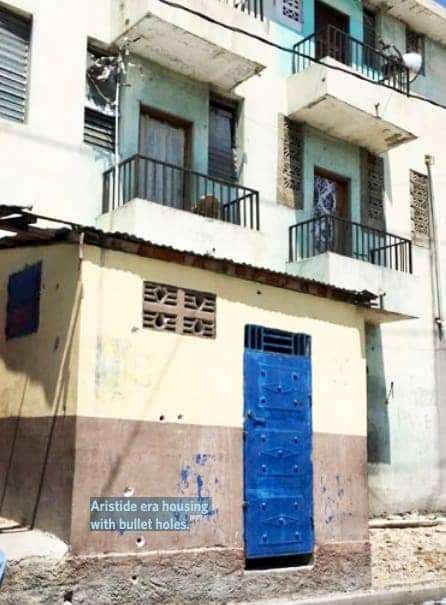
During the three brief periods Aristide was president, he more
than doubled the number of schools, and Haitians were quickly
transforming themselves into a literate, educated society. Only
five months after the 2004 coup and kidnapping of Aristide,
free school buses in the city of Cap Haitien had been these
destroyed by paramilitaries. – Photo: Judith Scherr
On the other hand, Chérizier’s G9 gangs, per your article, are supported by business and political elites and use rape, murder and terror – even burning people alive – to suppress protests, steal property and force people to vote a certain way. The origin of these gangs was not under Aristide, and there is no evidence of systematic state sponsored violence during the Aristide years (see pp. 5-10), unlike today.
More:
https://sfbayview.com/2022/08/new-york-times-disparages-aristide-haitis-champion-of-the-poor/
~ ~ ~
Many images from Haiti's history, accompanying the podcast:
17 April 2016
4.19- The History of Haiti
1806-Present. Enjoy.
https://thehistoryofrome.typepad.com/revolutions_podcast/2016/04/419-the-history-of-haiti.html
Direct Link: 4.19- The History of Haiti
Flag of Kingdom of Haiti:

Link to podcast:
https://tinyurl.com/mryp2bnc
(1:44:38)
Mayan Ruler Reincarnated as God of Corn in New Discovery
ALICE AMELIA THOMAS, ZENGER NEWS ON 8/25/22 AT 9:12 AM EDT
An ancient ruler embodied by the Mayan god of corn in the underworld can be seen on an astonishingly well-preserved stone disk recently extracted from the Temple of the Sun in Mexico.
The figure appears to be seated on a throne and is wearing a jade beaded skirt along with a serpent mask headdress, according to Juan Yadeun Angulo, the archaeologist in charge of the investigation and conservation of the site.
The limestone disk was discovered after a crypt was found on the north side of the Temple of the Sun, a stone complex located in the pre-Hispanic archaeological site of Tonina in the Mexican state of Chiapas.

The stone disc with the iconographic representation of the young maize god. It was recovered in 2021 in the Temple of the Sun within the Archaeological Zone of Tonina, Mexico.
INAH/ZENGER
The disk, which measures 17 inches in diameter and is 3.5 inches thick, makes reference to an event in the year 505 AD that took place 260 days after the death of a governor in the Mayan kingdom of Po´p, according to a statement obtained by Zenger News on Monday from the government of Mexico.
More:
https://www.newsweek.com/mayan-ruler-reincarnated-god-corn-new-discovery-1736900

Temple of the Sun, Toniná, Chiapas, Mexico
Maya Pyramid at Tonina Is One of the Biggest
Tuesday, July 14, 2015
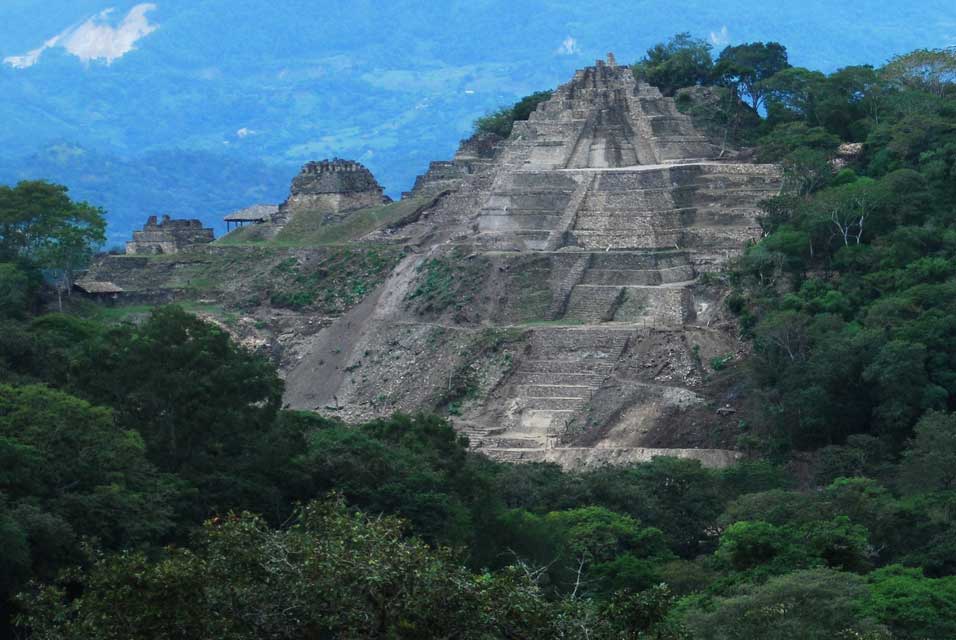
CHIAPAS, MEXICO—News.com Australia reports that recent excavations at Tonina by archaeologists from Mexico’s National Institute of Anthropology and History have shown the Maya city to be twice as large as predicted, with clearly defined districts, including areas of palaces, temples, housing, and administration. It had been thought that the Tonina acropolis had been built on a hill, but the excavations have shown that the mound covers a pyramid more than 240 feet tall, with 208 stone steps from its base to its apex. “It’s a big surprise to see that the pyramid was done almost entirely by the architects and therefore is more artificial than natural. This is because it was believed that almost every hill was a natural mound, but recent evidence has revealed that it was almost entirely built by the ancient inhabitants,” said Emiliano Gallaga, director of the site. More than 300 hieroglyphic texts have also been found. Some of them reveal the names of city rulers. The texts could eventually help scholars understand the decline of the ancient Maya civilization. To read in-depth about another ancinet Maya discovery, go to "Tomb of the Vulture Lord."
https://www.archaeology.org/news/3481-150714-mexico-tonina-pyramid
~ ~ ~
Wednesday, October 16, 2013
Chiapas Part 15: Toniná, the Maya warrior kingdom

Temple of the Smoking Mirror stands on the seventh or topmost level of Toniná's Acropolis.
One of the goals during our visit to Chiapas was to see and photograph Toniná, one of the
most militarily aggressive of the Classic-era Maya city-states. In fact, it was this warrior
kingdom that finally conquered much-better-known Palenque, located about 64 km (40 mi)
to the northeast. Palenque fell in 730 AD, after a bitter 26-year war. Toniná is also famous
for its stone sculptures of war captives, carved "in-the-round." In addition, the city contains
a monument carved with the last known date from the Maya Long Count Calendar.
Archaeologists consider that date, 909 AD, to mark the end of the Classic Era Maya world.
After that, the jungles of Chiapas and Guatemala gradually swallowed up the monuments of
Toniná and all the other once-glittering Maya cities. Most of those Classic Era centers were
not unearthed for almost a thousand years.
The Overview
- click for image -
https://2.bp.blogspot.com/-CbUVBRKaz8U/UlMyhdrwnbI/AAAAAAAALqs/pz0RPcKemKg/s640/Tonina%CC%81+on+hill+w:cowboy.jpg
Toniná sits on a hill with a panoramic view of the surrounding valley and mountains. A lone vaquero (cowboy) rides across an emerald pasture that is typical of the country surrounding the ancient ruins. The grey limestone with which the city was constructed causes it to almost disappear in the haze. In ancient times, the city was vividly painted and would have been clearly visible from a great distance. The Toniná ruins are open Tuesday through Sunday, 9AM - 4PM, and there is a fee of $46 pesos ($3.53 USD) to enter.
More, including a photo of an excellent scale model of the site:
https://cookjmex.blogspot.com/2013/10/chiapas-part-15-tonina-maya-warrior.html
Operation Condor: why victims of the oppression that swept 1970s South America are still fighting fo
Operation Condor: why victims of the oppression that swept 1970s South America are still fighting for justice
Published: August 16, 2022 12.13pm EDT
Between 1976 and 1978, an extrajudicial campaign of violent repression was waged by South American dictatorships against political dissidents and exiles who spoke out against domestic repression and military rule.
Operation Condor, as this campaign was known, has since inspired multiple novels, plays and exhibitions, not to mention a forthcoming HBO series. The latter, based on The Ashes of the Condor, the 2014 novel by Uruguayan writer Fernando Butazzoni, tells the story of a young man whose parents fled Uruguay during the military dictatorship.
In 1992, a cache of about 700,000 documents were discovered in a police station in Asunción, Paraguay. Dubbed the Archives of Terror, these papers comprehensively recorded the activities of the Paraguayan secret police since the 1970s.
These papers comprehensively recorded the activities of the Paraguayan secret police throughout the dictatorship of General Alfredo Stroessner (1954-1989). Ever since, scholars and journalists, in Chile, Argentina and the US have investigated this transnational terror network.
More:
https://theconversation.com/operation-condor-why-victims-of-the-oppression-that-swept-1970s-south-america-are-still-fighting-for-justice-186789
Can a Deeply Unequal Nation Totally Reverse Course?
Colombia’s new president has just placed a bet on greater equality. His nation’s rich can’t see him collecting.
BLOGGING OUR GREAT DIVIDE
AUGUST 25, 2022
by Sam Pizzigati
The alarm bells are — sort of — ringing, Bloomberg reports, in Colombia’s most “fashionable neighborhoods of Bogotá and Medellin.”
Colombia’s newly elected progressive president has just proposed a wealth tax, on his first day in office no less. In Latin America, the world’s most unequal region, an egalitarian move like that would normally have a nation’s most privileged enraged and frothing. And some of that frothing certainly is showing up since Gustavo Petro, Columbia’s first left president, proposed his new levy on grand fortunes. A top exec with Colombia’s largest financial conglomerate now even says he sees “a significant risk” the nation’s stock market “will practically disappear” under Petro’s reign.
But Colombia’s rich are, by and large, showing little of such hysterics. Simply put, Colombia’s wealthiest just don’t feel their new president can deliver any real squeeze on their considerable net worths. Petro’s “lack of a congressional majority” and Colombia’s powerful constitutional court and central bank, as the Financial Times has comfortingly informed global investors, will most likely “temper any radical impulses” on the new administration’s part.
The new Petro administration, meanwhile, has ample cause for radicalism. In 2019, the last full pre-pandemic year, no major market-based economy in the world had a higher level of income inequality than Colombia. And Colombia’s inequality has remained remarkably entrenched for generations, mainly because the rich in Colombia have been able to transfer a greater share of their riches to their offspring than the rich of any other nation. One result: Colombia’s top 1 percent hold an astounding 81 percent of their society’s private land, well above the 52 percent Latin American regional average.
More:
https://inequality.org/great-divide/can-a-deeply-unequal-nation-totally-reverse-course/
Venezuelan mural artist uses recycled plastic to light up Caracas suburb
CONTRIBUTOR
Efrain Otero Reuters
PUBLISHED
AUG 26, 2022 04:41PM EDT
GUATIRE, Venezuela, Aug 26 (Reuters) - On the outskirts of Caracas, dozens of children and older residents are hard at work carefully gluing plastic bottle caps onto a cement wall, which in just two weeks has turned into a colorful mural displaying the edges of two enormous, blue-winged macaws.
The "eco-mural" in Guatire, 42 kilometers (26 miles) east of Venezuela's capital, is the design of 25-year-old artist Oscar Olivares.
Olivares, who used social media to invite the public to contribute waste plastic, said the project will recycle around 300,000 bottle caps.
"Many people are recycling for the first time in their lives thanks to this mural," he said. "We hope they'll keep up the habit."
More:
https://www.nasdaq.com/articles/venezuelan-mural-artist-uses-recycled-plastic-to-light-up-caracas-suburb






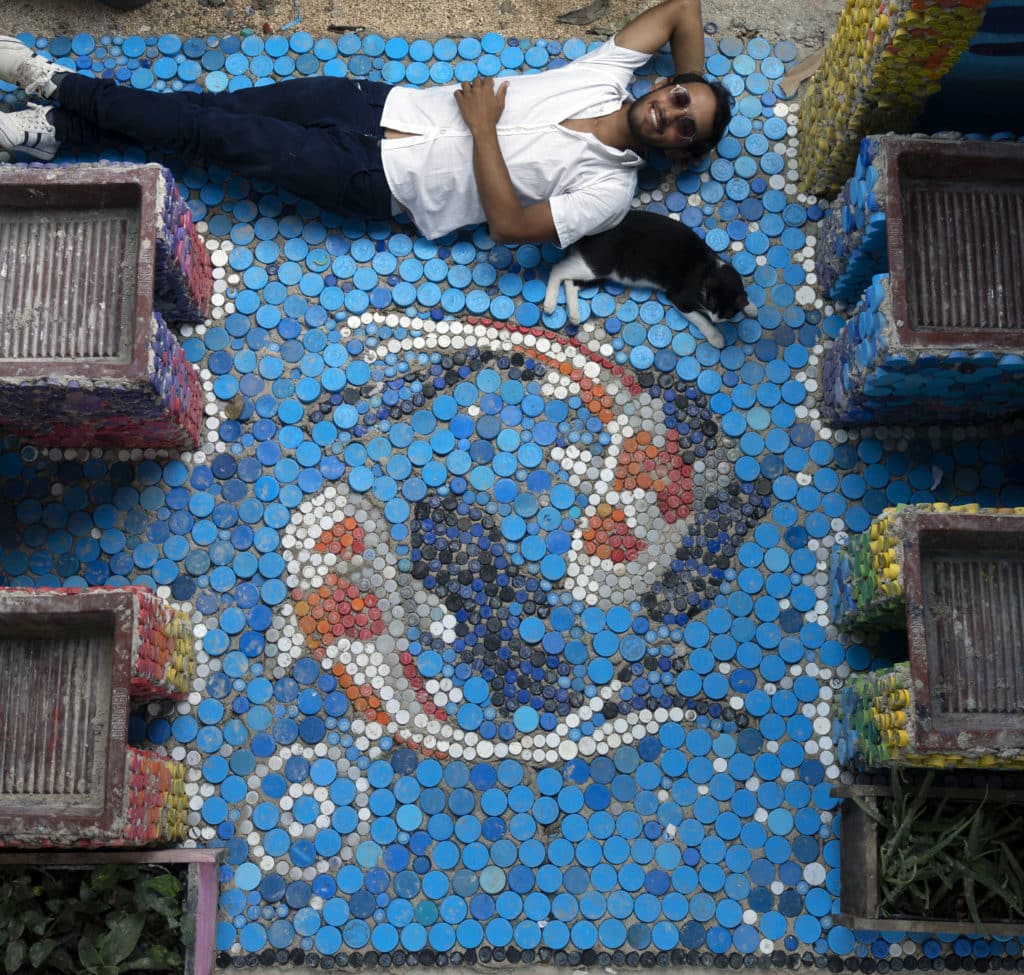
Caral, the oldest civilisation in AmericaAugust 18 2022 11:42 AM

By Jose Benzaquen, Ambassador Of Peru
The American continent surprises us from time to time with ancient cultures that we did not know existed, showing us new discoveries such as the Caral Civilisation which is believed to be 5,000 years old and located in the Supe district, Barranca province, Lima Region, in Peru and about 182km north of Lima, the Peruvian capital.
Of this citadel, made up of 7 pyramids and 32 mounds, renowned archaeologists such as Max Uhle, Julio C Tello and Paul Kosok carried out research work in 1905, 1937 and 1947, respectively.
It was the Peruvian archaeologist and anthropologist Ruth Shady, who began her work in 1994, and who in 1997 scientifically supported the antiquity of the Caral culture between the years 2700 and 2550 BC, qualified as a civilisation, and who changed the traditional history of the well-known American civilisations, such as the Inca (1300 to 1450 CE), Maya and Aztec, due to the antiquity of Caral, which has constituted until now a permanent challenge for the continuity of research.
The research work was carried out by a team of scientists from the Universidad Nacional Mayor de San Marcos; by the way, the oldest in America (May 12, 1551), and directed by the aforementioned Peruvian archaeologist.
The city of Caral presents characteristics of a civilisation that is not born from a conception of conquest; on the contrary, it is a civilisation that is born from a conception of peace and religiosity.

More:
https://www.gulf-times.com/story/722844/Caral-the-oldest-civilisation-in-America
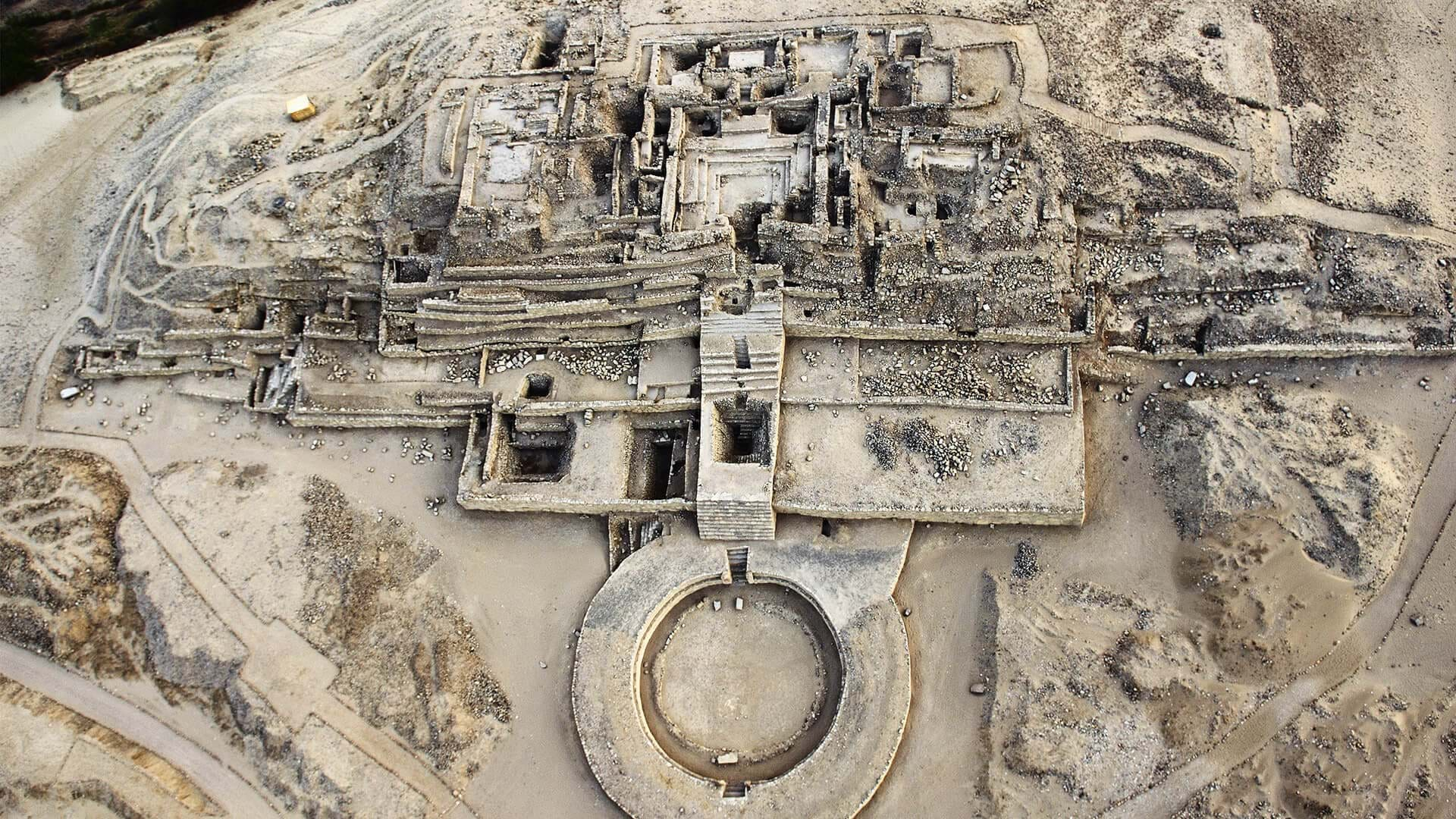

Nanacamilpa Firefly Forest
The enchanted forest, not far from Mexico City, is taken over by fireflies
Last updated: May 14, 2020 by Olha Savych
The forests of Piedra Canteada in Central Mexico has suffered from excessive logging in the past. However, since its amazing firefly phenomenon started to draw people into the area, the benefit of preserving nature has become clear to everyone. Every summer, from late June through early August, Nanacamilpa Firefly Sanctuary attracts hundreds of visitors flocking to see its fairy-tale-like landscape. Thousands of fireflies are illuminating the night forest during their quest to find a mating partner.
Macrolampis palaciosi is a firefly species that is endemic to thick pine (oyamel) forests in the Tlaxcala state, located in 55 mi (89 km) from Mexico City. The forest covers foot areas of the Iztaccihuatl and Popocatepetl volcanoes. High elevation, high humidity levels, and low light pollution make this environment perfect for lightning bugs to proliferate. The fireflies spend 20 months of their lives as larva, and only during several weeks, they emerge to shine and reproduce. They are emitting light only for about one hour after dusk, between 8 and 9:30 pm.
https://rove.me/to/mexico/nanacamilpa-firefly-forest
~ ~ ~
How Fireflies Are Keeping This Tiny Mexican Town Alive
In Nanacamilpa, a magical display of fireflies is attracting tourists by the thousands—now locals wonder how they can sustain the insect that brought them so much prosperity.
Fireflies dart in the forest at Santa Clara Sanctuary.
PHOTOGRAPH BY KIRSTEN LUCE, NATIONAL GEOGRAPHIC
BYERIK VANCE ANDSALLY RÍOS KURI
PHOTOGRAPHS BYKIRSTEN LUCE
PUBLISHED AUGUST 23, 2017
• 20 MIN READ
As night falls on Laguna Azul, an ecotourism lodge on the outskirts of the Mexican hamlet of Nanacamilpa, it looks like rain, and a group of eight tourists nervously watch the sky. Their guides look unconcerned. Cold rain makes for a miserable walk, but the fireflies love it.
A younger guide introduces himself in a strong voice as an older one looks on, leaning on a thick walking stick. The guide lists the basic rules of the tour: walk only on the path, no wandering, no music, no alcohol, no insect repellent, no lamps, and absolutely no cell phones. Any light, even that of a cell phone display, can distract the fireflies.
The walk follows sprawling farmland up a hill to the very edge of the forest. The guides pass fields of wheat, barley, fava beans, and corn before stopping for a moment. They explain that the corn fields to our right are a native corn that doesn’t require pesticides. The hybrid corn to our left, abutting the forest, requires regular spraying.
In the forest we see pines, oaks, and a fir called oyamel. The crowd bunches and murmurs. Several children look bored and start to squirm. Then it begins, slowly—a blink here, a flash there. When the dusk fades, the fireflies come out in earnest.
More:
https://www.nationalgeographic.com/photography/article/firefly-fields-mexico-tourism-ecotourism







ETC., ETC., ETC., ETC., ETC., ETC.
Could Colombia's new president help Washington solve the Venezuela crisis? Gustavo Petro offers U.S.
Gustavo Petro offers U.S. officials a fresh start for policy in Latin America. Will Washington seize it?
AUGUST 22, 2022
Written by
Connor Echols
Gustavo Petro is off to a fast start. In his first two weeks in office, the new Colombian president has already reestablished relations with Venezuela, replaced several top security officials, and moved to restart negotiations with one of the country’s most notorious rebel groups. And, with ambitious tax reforms and climate policies on the docket, he shows no signs of slowing down.
For many in Colombia, Petro’s reform agenda is a chance to steer their country away from poverty, corruption, and a decades-long war on drugs that has led to nearly half a million deaths without putting a dent in coca production. But experts say the impact of these policy shifts could go well beyond Colombia’s borders, offering new approaches for major issues from the international drug trade to the crisis in Venezuela. In other words, Petro’s administration represents a unique chance for a fresh start in Washington’s relationship with Bogota, with potential ripple effects across Latin America.
“There’s an opportunity to maybe change the things that don’t work well,” said Gimena Sánchez-Garzoli, the director for the Andes at the Washington Office on Latin America. “The U.S. shouldn’t see this as a negative, but as a positive — as a constructive way to adjust policies that really have not worked to meet the U.S.’s goals.”
But will the United States seize this opportunity? The short answer is: It’s complicated. President Joe Biden and Secretary of State Antony Blinken were both quick to congratulate Petro on his election in June, but neither has had much to say about him since. And, as Sánchez-Garzoli noted, the Pentagon could be apprehensive about the new president’s efforts to reform Colombia’s security services given the long-standing relationship between the two militaries. (In a statement to Responsible Statecraft, a Pentagon spokesperson said DoD “looks forward to continuing its close cooperation with Colombia under the new Petro administration.”)
More:
https://responsiblestatecraft.org/2022/08/22/will-washington-blow-its-chance-for-a-fresh-start-in-colombia/
ST. OSCAR ROMERO'S LIFE WAS FOREVER CHANGED BY THE MURDER OF HIS COLLEAGUE

ST. OSCAR ROMERO'S LIFE WAS FOREVER CHANGED BY THE MURDER OF HIS COLLEAGUE
Alex Bowie/Getty Images
BY GARRETT S. GRIFFIN/AUG. 20, 2022 9:00 AM EDT
Saint Óscar Romero was an archbishop during the late 1970s in El Salvador who publicly opposed his country's brutal dictatorship and later its military-civilian junta. General Carlos Humberto Romero (not related to St. Óscar Romero) rose to the office of the Salvadoran presidency in 1977 amid possible voter fraud and deadly rightwing violence against his opponents (via Britannica). The General then led a repressive state, murdering and imprisoning communists, leftists, and critics; many of whom were from the lower class. Farmers, church leaders, journalists, and other civilians were among the victims. Leftwing revolutionary groups soon battled the dictator's military forces. Into the fray stepped Archbishop of San Salvador Óscar Romero, calling for peace, denouncing the regime, and defending the poor.
Every Sunday at Mass, Romero would educate parishioners on ordinary people who were killed or kidnapped by the regime (via The New Yorker). He would describe massacres by the military, publicly demanded an end to the terror (and the leftwing guerilla response), and warned politicians as well as well as the rich that winning peace and addressing inequality went hand-in-hand. Romero's bravery attracted the attention of the entire nation, and his words swept across newspapers, television, and radio.
What spurred such a stance? It had much to do with the death of Father Rutilio Grande.
THE MIRACLE OF RUTILIO GRANDE
Rutilio Grande was a priest who helped Salvadoran farm workers organize in Aguilares (via American Magazine). The plight of the poor and the Jesuit focus on social justice led Grande to help farmers push for better living and working conditions. Organizing unions as well as talks of justice and land reform were associated with the left and with communism, and this brought the death squads, backed by the military and the wealthy. Farm workers were murdered and their bodies were put on display. Grande was shot to death in his car on March 12, 1977; a few weeks after the election of El Salvador's dictator.
Grande and Óscar Romero had long been friends. Romero left San Salvador and joined the farm workers in mourning and prayer at the funeral Mass. According to American Magazine, the archbishop, who was fairly conservative and had generally avoided politics, then kicked off his crusade against the regime. He declared that he would no longer attend government events and started castigating the state from the pulpit. One miracle Grande performed, Pope Francis recently said, was awakening Óscar Romero.
Read More: https://www.grunge.com/972870/st-oscar-romeros-life-was-forever-changed-by-the-murder-of-his-colleague/

As a young man.


The killing of Archbishop Oscar Romero was one of the most notorious crimes of the cold war. Was the CIA to blame?
Tom Gibb uncovers new evidence about the murder of El Salvador's spiritual leader
Tom Gibb
Wed 22 Mar 2000 21.11 EST
San Salvador. In the bright morning sunlight of March 24 1980, a car stopped outside the Church of the Divine Providence. A lone gunman stepped out, unhurried. Resting his rifle on the car door, he aimed carefully down the long aisle to where El Salvador's archbishop, Oscar Arnulfo Romero, was saying mass. A single shot rang out. Romero staggered and fell. The blood pumped from his heart, soaking the little white disks of scattered host.
Romero's murder was to become one of the most notorious unsolved crimes of the cold war. The motive was clear. He was the most outspoken voice against the death squad slaughter gathering steam in the US backyard. The ranks of El Salvador's leftwing rebels were being swelled by priests who preached that the poor should seek justice in this world, not wait for the next. Romero was the "voice of those without voice", telling soldiers not to kill.
The US vowed to make punishment of the archbishop's killers a priority. It could hardly do otherwise as President Reagan launched the largest US war effort since Vietnam to defeat the rebels. He needed support in Washington, which meant showing that crimes like shooting archbishops and nuns would not be tolerated.
The ordering of the murder was blamed on the bogeyman of the story, a military intelligence officer called Major Roberto D'Aubuisson who had, conveniently for Washington, recently left the army. In the weeks before the murder, he was repeatedly on television using military intelligence files to denounce "guerrillas". Those he accused were often murdered. Romero was near the top of the list.
More:
https://www.bostonglobe.com/opinion/2018/10/19/oscar-romero-the-saint-knew/SlWGYjVOjDsESC7RMLzImO/story.html

Roberto D'Aubuisson, AKA "Blowtorch Bob"
Roberto D'Aubuisson Arrieta (23 August 1944 - 20 February 1992) was a major in the Salvadoran Army and a political leader who founded the Nationalist Republican Alliance (ARENA), which he led from 1980 to 1985. He was known as "Chele", or "light-skinned face", and was considered a leader of right-wing death squads who tortured and killed thousands of civilians before and during the Salvadoran Civil War. To political prisoners, he was known as "Blowtorch Bob", due to his frequent use of a blowtorch in interrogation sessions.[1][2]
https://military-history.fandom.com/wiki/Roberto_D%27Aubuisson
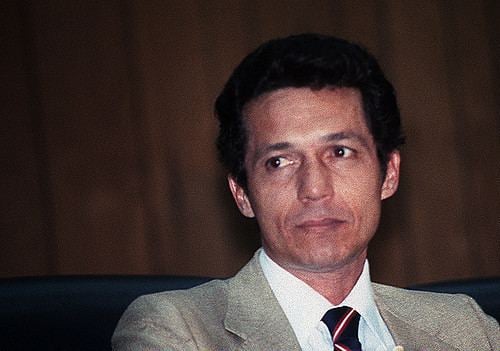
October 6, 2018
A Deadly Path Towards Sainthood: The Assassination of Monsignor Oscar Romero
Author
Daniela Duran
etween January 1980 and September 1992, the Central American country of El Salvador faced the struggles of a violent and consequential war.3 In the previous decades, Salvadorians had been under a military dictatorship that had abused the rights of the poor.4 A major part of the Salvadorian economy is based on the produce of coffee, which is also the main source of income for farmers and land owners alike; however, during these times, the military government used a repressive ideology to unfairly separate Salvadorian farmers from their lands, and give those lands to the already wealthy instead. All of this injustice, combined with severe political instability, corruption, and an economic crisis, eventually motivated the poor farmers and coffee growers to unite their forces and rebel against those military government authorities.5
In the 1970’s, the decade previous to the war, many revolutionary groups were formed in opposition to the authorities. Many attempted coup d’états took place, as young people united to try to bring down the military authorities, who, in turn, responded to the uprising with violent suppression. Many were murdered as a result of their opposition, and many public massacres took place as tensions rose on both sides.6 The military had orders to murder anyone suspected of opposing the government. El Salvador had never found itself in such a bad position, and its citizens were all worried about their uncertain futures. Their lives were threatened by the hands of soldiers who would murder anyone, regardless of their age or gender. In the middle of that turmoil, however, one hero arose. One sole individual who was brave enough to stand up for those whose family members had been killed, and for all those whose human rights had been violated. Monsignor Romero knew that he had to fight for peace, in the name of God, even if this would cost him his own life.7
More:
https://stmuscholars.org/a-deadly-path-towards-sainthood-the-assassination-of-monsignor-oscar-romero/
- snip -
A few days after the assassination, on March 20, 1980, a public funeral was held in his honor. The event was officiated in the metropolitan Cathedral of San Salvador, and it is estimated that around 250,000 people showed up. In the plaza, however, as the funerary commemoration was held, a huge explosion caused terror among the people. A bomb had been placed in the area, and people were being shot by snipers hiding around the zone. Approximately two hundred people were injured in the incident, and forty were killed. Clearly, Monsignor Romero’s preaching has continued to incite controversy, even after his unexpected death. Authorities were not happy with his impact and the admiration people felt towards him.20
More:
https://stmuscholars.org/a-deadly-path-towards-sainthood-the-assassination-of-monsignor-oscar-romero/
~ ~ ~
"Romero"
This is the last film of actor Raul Julia, who played the Archbishop. He died not long afterward.
Profile Information
Member since: 2002Number of posts: 160,530